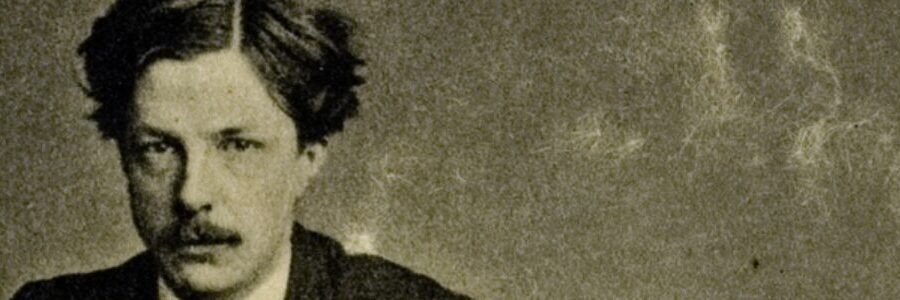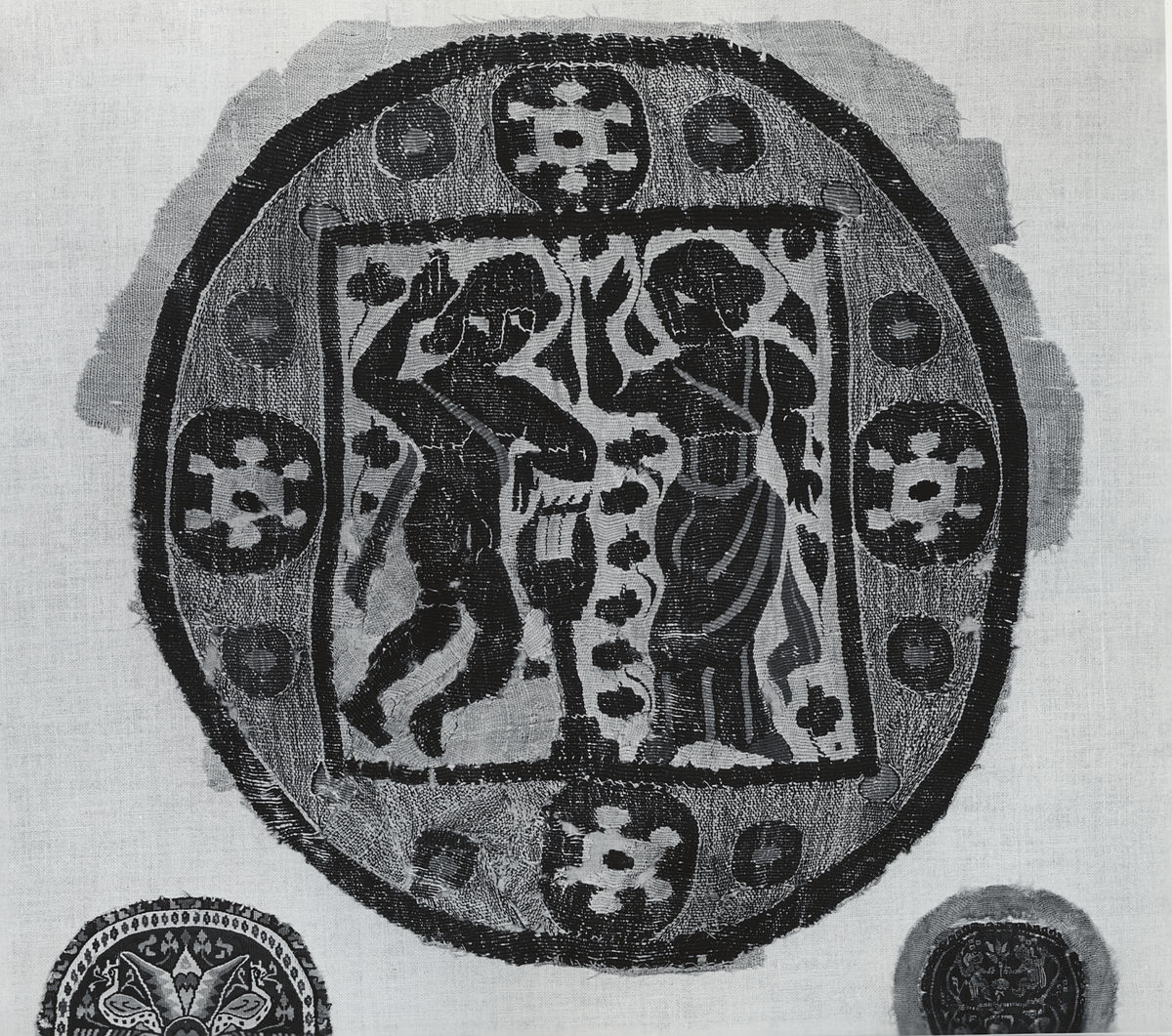A quick author’s note first: for the three blog posts I have written so far, I started by looking at Symonds’ memoirs, then his letters, to search for evidence linking him with to the book/image/author in question. I would then read the source. I decided to try a different approach this time. I picked a book from his library before consulting Symonds’ memoirs and letters for connecting points. This way, I hoped I would be better able to put myself in Symonds’ role as a reader. The book I selected is by Vernon Lee, the pseudonym for Violet Paget. While entering the books from Symonds’ library into our Omeka catalog, I noticed three books, Studies of the Eighteenth Century in Italy, Euphorion, Belcaro, and Juvenilia by Vernon Lee on the list. I became curious about what Symonds saw in Lee’s works in particular. With this, I opened Belcaro: Being Essays on Sundry Aesthetical Questions.
Belcaro is a collection of Lee’s ”studies,” in which she describes her observations and experiences of different works of art. This book implements her approach to psychological aesthetics, an area she is expert in. Her analysis is based on a variety of artworks, from sculpture to bas-relief, music to poetry. ( Fun fact: While writing about music, Vernon Lee takes Mozart’s character, Cherubino, from the Marriage of Figaro. This male character is usually portrayed in opera productions y a mezzo-soprano, a woman. Vernon Lee also sees herself as a woman who often assumed masculine attire. )
In each chapter, Lee uses one specific art form to shed light on a distinct aspect of aesthetic experience. She usually points out a difference between the way people are inclined to see the arts and the way she deems this art ought to be perceived. And such inconsistency, according to her, is what distances “The Child in the Vatican” from the true aesthetic values of Greek sculptures, from falling in love with a city like Rome, which has given birth to the richest history of mankind. (Lee, 48). Thus, Lee argues against appreciating arts from what viewers think it portrays. Rather, we should look at it in terms of how it portrays, “the perfection of line and curve, and light and shade,” as she puts; “the highest intrinsic quality of form is beauty; and the highest merit of the artist… is to make form which is beautiful” (41). In another chapter on a bas-relief of Orpheus and Eurydice, Lee explains how, by assuming that each art piece tells a story outside itself, people are only able to enjoy the arts if they know enough background information, i.e., who Orpheus and Eurydice are and what their relationship is. Once again, she criticizes this kind of appreciation on the basis of a viewer’s knowledge as “appreciating merely your own intellectual equivalent of it [art]” (Lee, 64). Topics of other chapters include the “supernatural” power of poems, the fidelity of music performers to composers, and more.

To truly appreciate the arts, as Lee suggests, one needs to see a work of art in its light, not one’s own. While Lee’s position is firm, she unfolds her arguments imaginatively, narrating in a way that, to an extent, makes her work itself a piece of art. For example, in her essay on “Orpheus and Eurydice,” she says:
“One answer, then another, then yet another, as fancy took more definite shapes. Yes, the dawn and the morning are a pair of lovers over whom hangs an irresistible, inscrutable fate
—Cephalus and Procris, Alcestis and Admetus, Orpheus and Eurydice.” (Lee, 50)
Although often vague and giving her readers a real hard time, her poetic style does not fail to remind me of another equally imaginative writer, John Addington Symonds. Here is an excerpt drawn from “The Song of the Summer,” which is included in Symonds’ Miscellanies:
“He threw his rags aside. Naked he stood there; like an athlete, like a Greek hero, like Heracles or Hermes in the dawn of noble deeds. His firm and vital flesh, white, rounded, radiant, shone upon the sward.” (Memoirs, 370)
(Memoirs, p. 370)
In the quotes selected, both Symonds and Lee make reference to Greek figures. While Lee directly list them to illustrate what she describes as “a pair of lovers,” appealing to readers’ romantic imagination, Symonds directly writes his erotic imagination as realized in the figure of a Greek hero. Also, they both use “dawn” here to convey a sense of hope for the forthcoming future for those bright energetic Greek youth.
So I was very surprised when I finally opened Symonds’ letters to search for his references to Vernon Lee. Between 1880 and 1884, Symonds corresponded frequently with her; he wrote around fifteen letters to Vernon Lee, besides also mentioning her multiple times in his correspondence to his other friends. Symonds knew Vernon Lee from her work, Studies of the Eighteenth Century in Italy. Both were influential for their studies of the Renaissance, and at one point Symonds considered Lee a “new star risen above the horizon” (Letters, 995) It is clear, however, that Symonds often disagreed with Lee’s writing style as well as her way of unfolding her arguments. Symonds’ interactions with Lee, therefore, were not entirely pleasant. At first, Symonds did not hesitate to provide writing advice to Lee, as he considered himself “as an older craftsman” speaking to “a younger craftsman” (Letters, 635). Gradually, however, Symonds became impatient with Lee’s writing and her “overconfiden[ce] in [her] own intuition,” which he eventually described as “insufferable ignorant conceit” while writing to one of their mutual friends, Eleanot Frances Poynter, (Letters, 853). Regarding Belcaro, the book being analyzed here, Symonds directly expressed his difference of opinion, writing that “Art is not Art’s end; & Beauty is not its end; Art is the means, & Beauty is the mode chosen for utterance of the Geist” (Letters, 740) In a latter correspondence addressed to Lee, Symonds directly tells Lee that “I[he] feel[s] that you[she] imagine yourself to be so clever that everything you think is either right or else valuable. And your way of expressing yourself is so uncompromising that your belief in yourself grates upon my sense of what is just and dignified.” Hence, Symonds (Letters, 897 & 898).
Symonds’ frankness, his keen willingness to mentor and guide a junior scholar whom he considers a “comrade,” and his intolerance of “one-sidedness” and “cocksure” writing, are new to my knowledge of him. Although Vernon Lee turns out not to be among those who influenced Symonds’ own work, she helps us see other sides of Symonds as a reviewer, a senior scholar, who, although firmly believes that one should not withhold their opinions, also assumes it his responsibility to perpetuate the “accepted wisdom, a certain caution & reserve in asserting our opinions” that may differ from the world. More moving perhaps, is his insistence on a clear writing style that is accessible to readers. The illimitable energy and vigor of Lee’s writing , as Symonds describes, is “pungent.” However, he also admits that her books will “give me delight” while stimulat[ing] me[him] to controversy.” (p. 870) While original ideas shine in Lee’s essays, Symonds’ reflection on Belcaro shows again his human-centered way of thinking: art, if anything, is a unique and crucial human expression; there will be no aesthetic experience. I find myself more convinced by his argument.
Works Cited:
Lee, Vernon. Belcaro: being essays on sundry aesthetical questions. W. Satchell & co: 1881.
Symonds, John Addington. The letters of John Addington Symonds. Volume II. Wayne State University Press: 1967
Regis, Amber K. The Memoirs of John Addington Symonds: A Critical Edition. London: Palgrave Macmillan UK , 2016.

